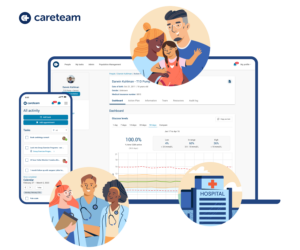

U.S employers’ healthcare costs will reach more than $15,000 per employee in 2024, representing an 8.5% increase from 2023, according to a new report.
The Aon report, published Tuesday, analyzed healthcare costs for more than 800 U.S. employers representing 5.6 million employees.
The projected 2024 increase is nearly twice the 4.5% increase that employers saw from 2022 to 2023, the Aon report showed. Employers’ healthcare costs were $11,224 per employee on average in 2023 and $10,736 in 2022.
There are numerous reasons for the increase in employers’ healthcare costs, but inflation is the biggest component, said Debbie Ashford, the North America chief actuary for health solutions at Aon.
“There’s a lag in inflation in the healthcare sector because the contracts that providers have in place with the insurance company run for multiple years,” Ashford said in an interview. “Once inflation really started kicking in over the last year or year-and-a-half, they weren’t able to let those [increases] filter through into prices because the contracts were already in place. So what we’re seeing is those increases are basically being phased in over multiple years.”
Ashford added that there has been an increase in medical utilization since the pandemic, an increase in chronic conditions and an increase in mental health challenges and substance use disorders. Rising prescription drug prices are also a contributor.
Employee premiums from paychecks reached $2,682 per employee on average in 2023, a 1.7% increase from 2022 at $2,638. The total plan cost in 2023 is $13,906 per employee on average, a 4% increase from 2022 at $13,374. This total plan cost, however, excludes employee out-of-pocket payments like deductibles, copays and coinsurance (which reached $1,993 per employee in 2023, a 5.7% increase from 2022 at $1,886).
Employers typically subsidize around 81% of health plan costs, and employees pay the rest. Ashford said that in the current tight labor market, employers don’t want to shift more of the health plan costs on employees because they want to attract and retain workers.
“Overall, employers continue to be concerned with healthcare costs, but then they’re also worried about making sure that healthcare is affordable for their employees, so they’re very reluctant to make changes that would shift cost onto employees,” she said.
Total healthcare cost increases are different depending on the industry, with the professional services industry being particularly affected and the retail and wholesale industry being less affected, Aon also found.
To control costs, employers are implementing several strategies, according to Ashford. This includes taking more “targeted interventions on high-cost claimants,” using navigation tools, providing access to centers of excellence and leveraging telemedicine.
“There’s no silver bullet,” Ashford stated.
Photo: Ta Nu, Getty Images


















